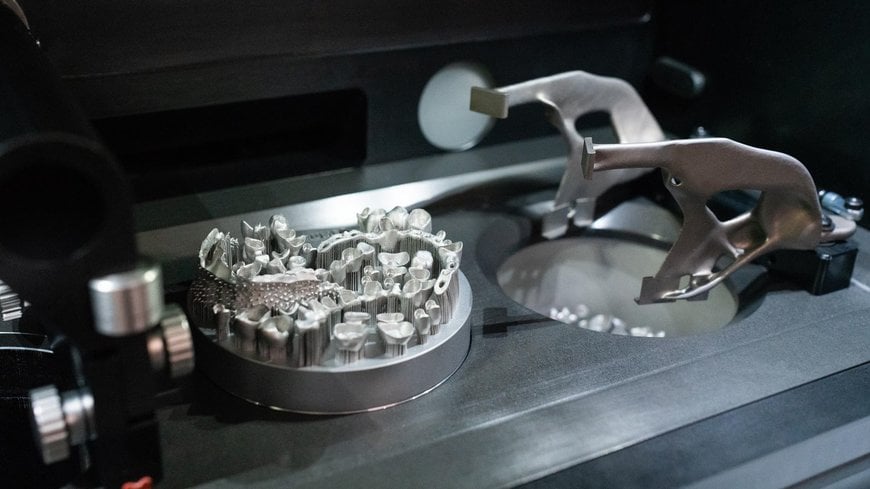www.industry-asia-pacific.com
12
'21
Written on Modified on
TRUMPF prints dental prostheses automatically in multi-shift operation
With the improved "Multiplate" solution, manufacturers can print up to 400 teeth in one piece. The 3D printer works overnight without the need for employees to be present. The solution helps dental labs avoid bottlenecks during peak orders and works approximately ten times faster than milling.

At the world's leading trade fair for the dental industry, IDS in Cologne, Germany, high-tech company TRUMPF will be showcasing solutions for series production in 3D printing. These include a new improved version of the "Multiplate" function for the TruPrint 1000 3D printer. This technology enables the 3D printer to automatically change the substrate plates on which the system prints the dental prosthesis. "With our solution, companies can automatically produce dental restorations in multiple layers. In contrast to conventional milling, this makes them around ten times faster.
As a result, TRUMPF is making a significant contribution to increasing productivity in the dental industry with additive manufacturing, says Reinhard Sroka, dental industry manager at TRUMPF Additive Manufacturing. The TruPrint 1000's coater tool pushes the substrate plate into the overflow container at the end of the process. The 3D printer then independently processes a new substrate plate. The system can seamlessly start the next print job without a machine operator having to open it and insert a new plate. A spring fork ensures that the overflow container lowers the substrate plates to the correct position. The TruPrint 1000 with the multiplate function is suitable for all manufacturers in the dental industry, especially smaller dental laboratories.
TruPrint 1000 prints up to 400 teeth in one piece
With the new Multiplate version, the TruPrint 1000 can automatically print dental restorations onto four substrate plates in succession. For this purpose, TRUMPF experts have developed special support structures that the 3D printer builds up additively on the substrate plate during the process together with the dental prosthesis. With these structures, the substrate plates can be stacked on top of each other in the overflow cylinder without damaging the printed dental prosthesis.
The TruPrint 1000 features the Multilaser principle, in which two lasers work simultaneously in the powder bed. With the Multiplate function and the Multilaser principle, the system can print up to 400 dental products such as bridges or crowns at a time. The TruPrint 1000 with the Multiplate function is suitable for all manufacturers in the dental industry, especially small dental laboratories. This is because employees in the industry often restart the 3D printer at night to meet delivery deadlines. Smaller dental labs usually don't have the capacity for this and must turn down orders. The improved multiplate function helps them avoid bottlenecks and remain competitive.
www.trumpf.com

